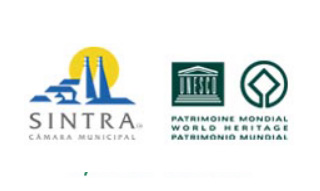The Chalet was built by King Ferdinand II and his second wife Elise Hensler, Countess of Edla, between 1864 and 1869, in keeping with the Alpine chalet model that was in vogue in Europe at the time.
The building is extremely picturesque, characterized by the horizontal marking of the the external plaster, painted to imitate timber cladding, and by the extensive use of cork as a decorative element, covering door and window frames, eaves and verandas, as well as tree trunks backing onto the facades to support climbing plants.
The Chalet's location is noteworthy as it is situated at the opposite end of the park in relation to the Palace, thereby maintaining an important visual relationship with it, which is accentuated by the proximity of a dramatic group of granite blocks, the Chalet Stones, and a valley, which the Chalet overlooks. From the Chalet's veranda there is a view of the sea and, from the Stones, of the Mourish Castle walls outlining the hills and the Palace. The surrounding garden includes exotic collections, viewpoints overlooking the Palace, the Chalet and the Mourish Castle and botanical species from all over the world, such as the rare tree-ferns imported from Australia and New Zealand, planted in the Valley.
http://www.sintraromantica.net/en/monuments/chalet-and-garden-of-the-countess-of-edla#sigFreeId435fc695d8
In the second half of the 19th century, King Ferdinand II and his future second wife, Elise Hensler, the Countess of Edla, created a Chalet and a Garden in the western part of the Park of Pena, a private space designed in accordance with the romantic taste, which served as a refuge and leisure area for the couple. Strategically situated to the west of the Palace of Pena, the building followed the model of Alpine Chalets, which were then very fashionable in Europe.
Its eclectic decoration consists most notably of mural paintings, stucco work, glazed decorative tiles and an exhaustive use of cork as an ornamental feature. Outside, the garden that surrounds the Chalet (as well as the Pena Farm) combines indigenous vegetation with botanical species from all over the world, forming an exotic landscape that includes such delights as the Countess’s Fernery, the Restharrow Garden, the Pergola and the lakes.
The building that has become known as the Chalet of the Countess of Edla was built between 1864 and 1869, with major changes being made to the landscape of the surrounding area. Influenced by the romantic spirit of the time, King Ferdinand and Elise Hensler, the future Countess of Edla, created one of the most idyllic and picturesque areas within what is considered to be the largest and most emblematic romantic park ever designed in Portugal.
The Chalet is a small and highly scenic building, distinguished on the outside by the horizontal marking of its paintwork, which simulates a series of wooden planks, and the cork that is used to cover the balusters of the balconies, outline the shape of the eaves, frame the doors and windows, and simulate climbing plants.
The dramatic nature – both of the building itself and the surrounding countryside – is accentuated by the close proximity of a group of monumental granite boulders placed inside the garden itself, and the stunning views over the valley, the sea in the distance, the Palace of Pena, the Moorish Castle and the Cruz Alta.
The Garden has a brightly-coloured formal area of camellias, rhododendrons and azaleas, and the various landscape interventions have produced an exotic atmosphere through the planting of over two hundred botanical species and the creation of nooks and crannies, paths, benches and belvederes, allowing visitors to enjoy a pleasant stroll between the Chalet and the Palace of Pena. All along this path as it leads down to the Countess’s Fernery, visitors unexpectedly encounter a series of different ornamental features designed to enhance their enjoyment of this delightful atmosphere. The valley to the east was the site chosen for the Fernery, the first collection of ferns in the Park of Pena, with the tree ferns of Australia and New Zealand being particularly striking examples.
Adjacent to the Garden of the Countess of Edla are the various structures that make up the Pena Farm, including the Stables and an area that houses the horse-drawn carriages used for rides around the Park of Pena.
The Garden and Chalet of the Countess of Edla were classified as a Property of Public Interest in 1993, and were included in the Cultural Landscape of Sintra, which has been classified by UNESCO as World Heritage since 1995.
Timetable and Prices:
http://www.parquesdesintra.pt/planear-a-sua-visita/horarios-e-precos/
Estrada da Pena
2710-609 Sintra
Tel.: 21 923 73 00 / 21 923 73 36
E-mail:comercial@parquesdesintra.pt info@parquesdesintra.pt
www.parquesdesintra.pt
GPS:
Chalet e Jardim da Condessa D’ Edla
38° 47' 9,41" N
9° 23' 58,48" W


 Português
Português
 English (UK)
English (UK)







